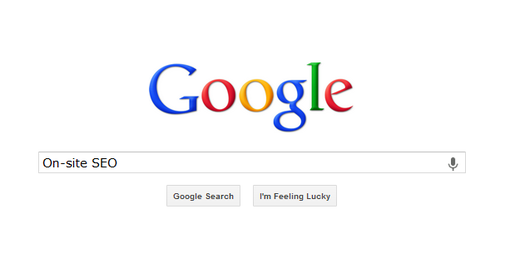Search engine optimization (SEO) is a search engine marketing technique that requires understanding and skills on the tasks to be done. Unlike pay-per-click advertising, SEO does not require any payment on the search engine,so if you plan it well, you can design it to be as cost-effiecient as possible. Though SEO asks tremendous hard work, the benefit it gives back are worth all the challenges when it is surpassed.
Incorporating on-site SEO in your website is one of the most important practices that you need to nail down. Getting a website indexed in search engines is one of the primary goals of SEO, an without proper on-site techniques this can be difficult to accomplish accordingly. The constant changes in algorithm requires webmasters not to rely on off-site optimization alone, but to integrate on-site and off-site together effectively for total success of the process.
Why On-Site Optimization is Important?
Off-site SEO will not reach its fullest potential without the on-site backing up. This is primarily due to the very factors that signal search engines about the website’s relevance in a particular keyword should be first found on the inner elements of the website. Meta tags including keywords, descriptions, titles, and URL’s plays a big role in assessing website relevance. Other factors include, web design, speed, and website navigation.
On-site SEO Factors Affecting Search Engine Rank
Web Content
Many times might you have already heard of the sentence “content is king.” It has been a cliché in SEO, but still, it is a sentence that should be remembered and practiced at all times. SEO success will be very difficult without content because search engines crawl information according to what it finds useful and relevant. Insertion of key words or phrases can be essential for optimized content, but when we say ‘quality’, images, videos, and articles should not be created for search engines alone, but for the readers especially. Think of the users when you write or post articles in your website. Viral social media content also greatly affect SERP rankings.
Page Title and Description
Why On-Site Optimization is Important?
Off-site SEO will not reach its fullest potential without the on-site backing up. This is primarily due to the very factors that signal search engines about the website’s relevance in a particular keyword should be first found on the inner elements of the website. Meta tags including keywords, descriptions, titles, and URL’s plays a big role in assessing website relevance. Other factors include, web design, speed, and website navigation.
On-site SEO Factors Affecting Search Engine Rank
Web Content
Many times might you have already heard of the sentence “content is king.” It has been a cliché in SEO, but still, it is a sentence that should be remembered and practiced at all times. SEO success will be very difficult without content because search engines crawl information according to what it finds useful and relevant. Insertion of key words or phrases can be essential for optimized content, but when we say ‘quality’, images, videos, and articles should not be created for search engines alone, but for the readers especially. Think of the users when you write or post articles in your website. Viral social media content also greatly affect SERP rankings.
Page Title and Description
After web content, the second in importance is the page title or title tag. It is the title of the document that appears in the browser bar. In search engine results, page titles are specified in blue linkable text wherein under it are the page description and URL. Titles should be created related to the content of the page. If you’re a newbie and uncertain about the whole process, asking Google Adwords Support from an expert can make a big difference on how your website is indexed.
URLs
The Uniform Resource Locator abbreviated as URL is the web address where your website can be found. it is seen in the address bar of your web browser and usually contained in the clickable link redirecting to your website, an example is “http://yaelconsulting.weebly.com” In doing effective on-site SEO the URL of the inner pages of your website should be arranged in a proper category hierarchy. Inner pages are also optimizable and can be useful for searchers looking for more specific information.
IMG Alt Tags
Image alt tags are used for images so that they can also be found relevant by SERPs when users are looking for images relating to a specific keyword.
The Uniform Resource Locator abbreviated as URL is the web address where your website can be found. it is seen in the address bar of your web browser and usually contained in the clickable link redirecting to your website, an example is “http://yaelconsulting.weebly.com” In doing effective on-site SEO the URL of the inner pages of your website should be arranged in a proper category hierarchy. Inner pages are also optimizable and can be useful for searchers looking for more specific information.
IMG Alt Tags
Image alt tags are used for images so that they can also be found relevant by SERPs when users are looking for images relating to a specific keyword.


 RSS Feed
RSS Feed